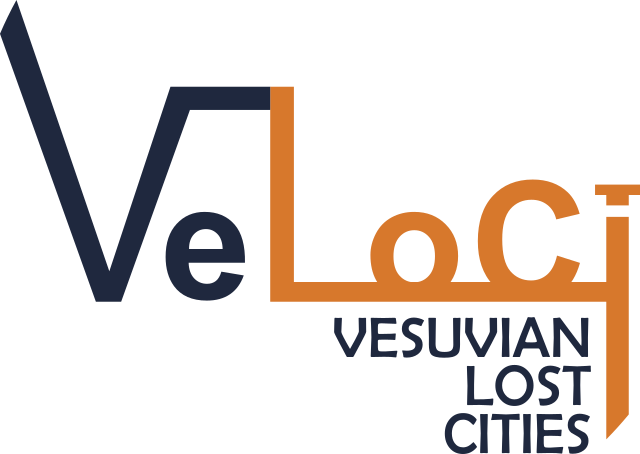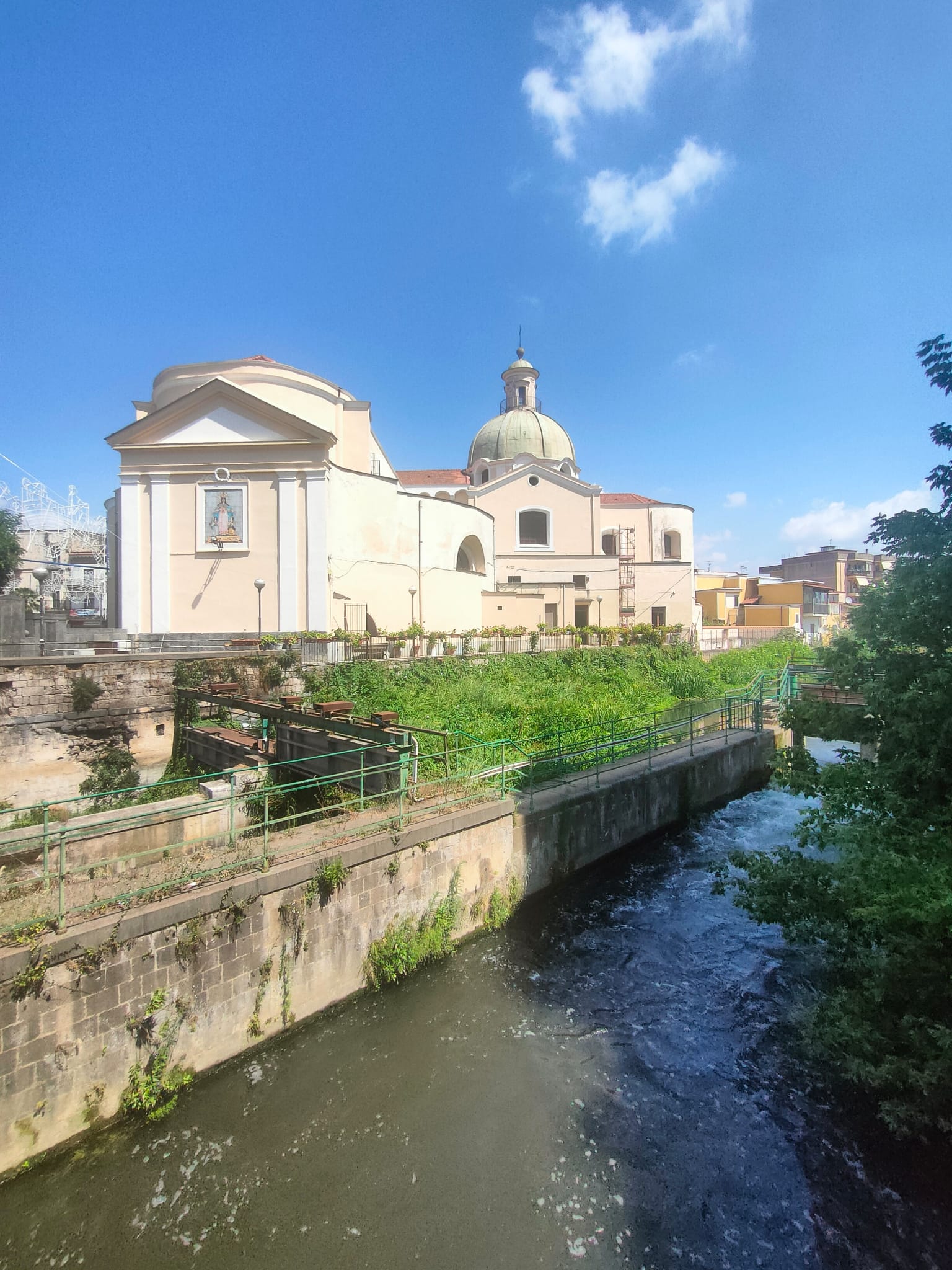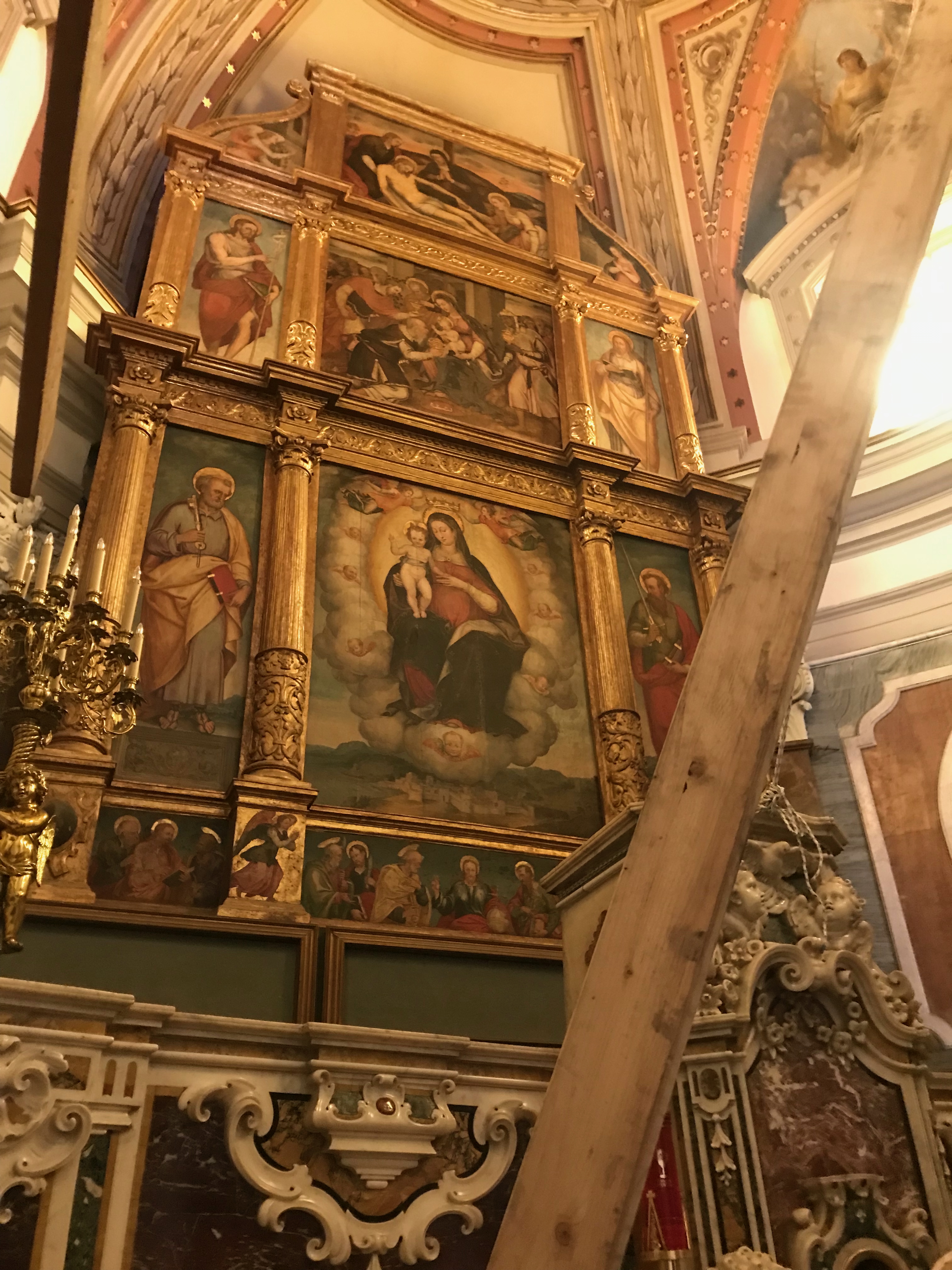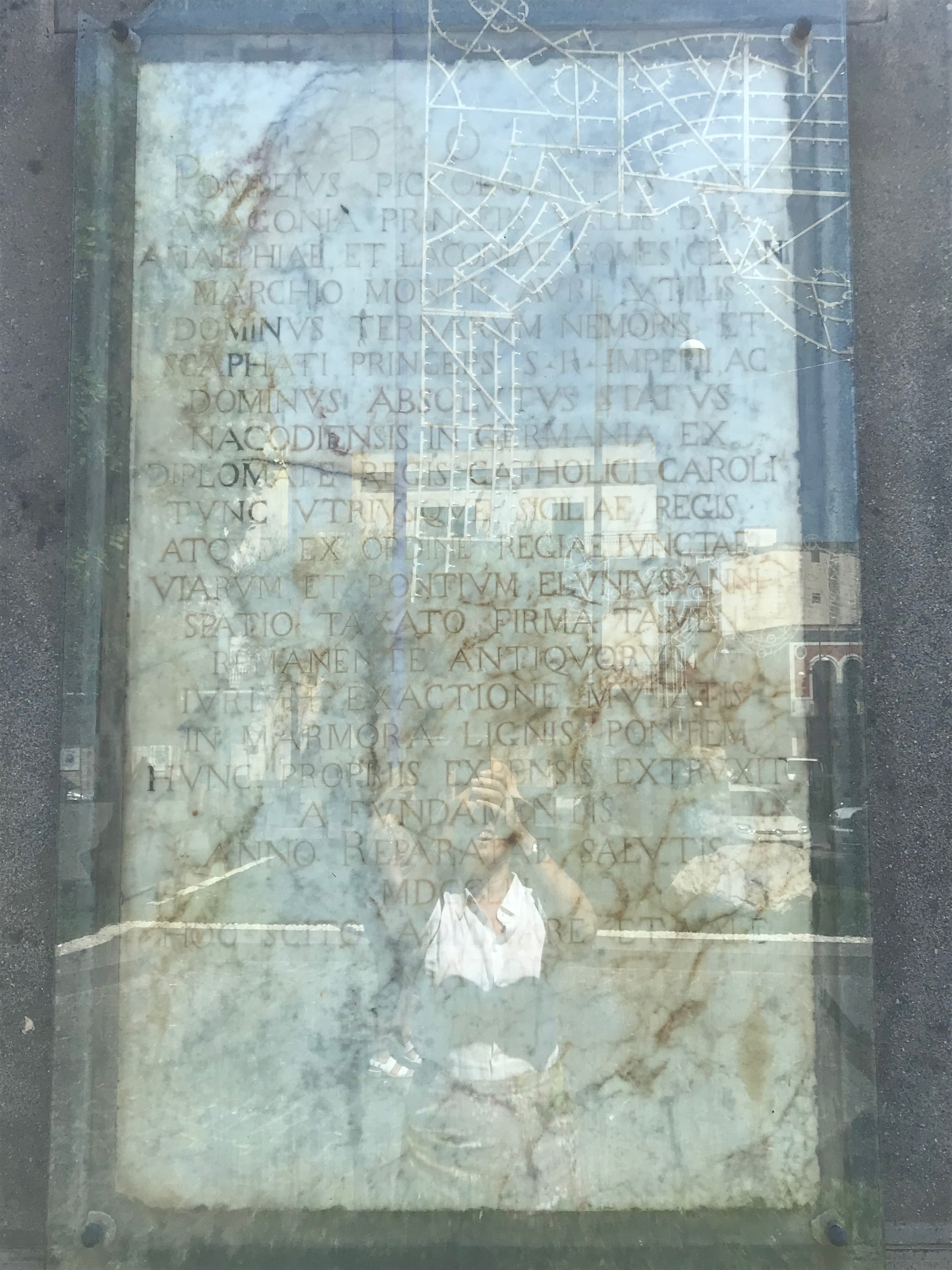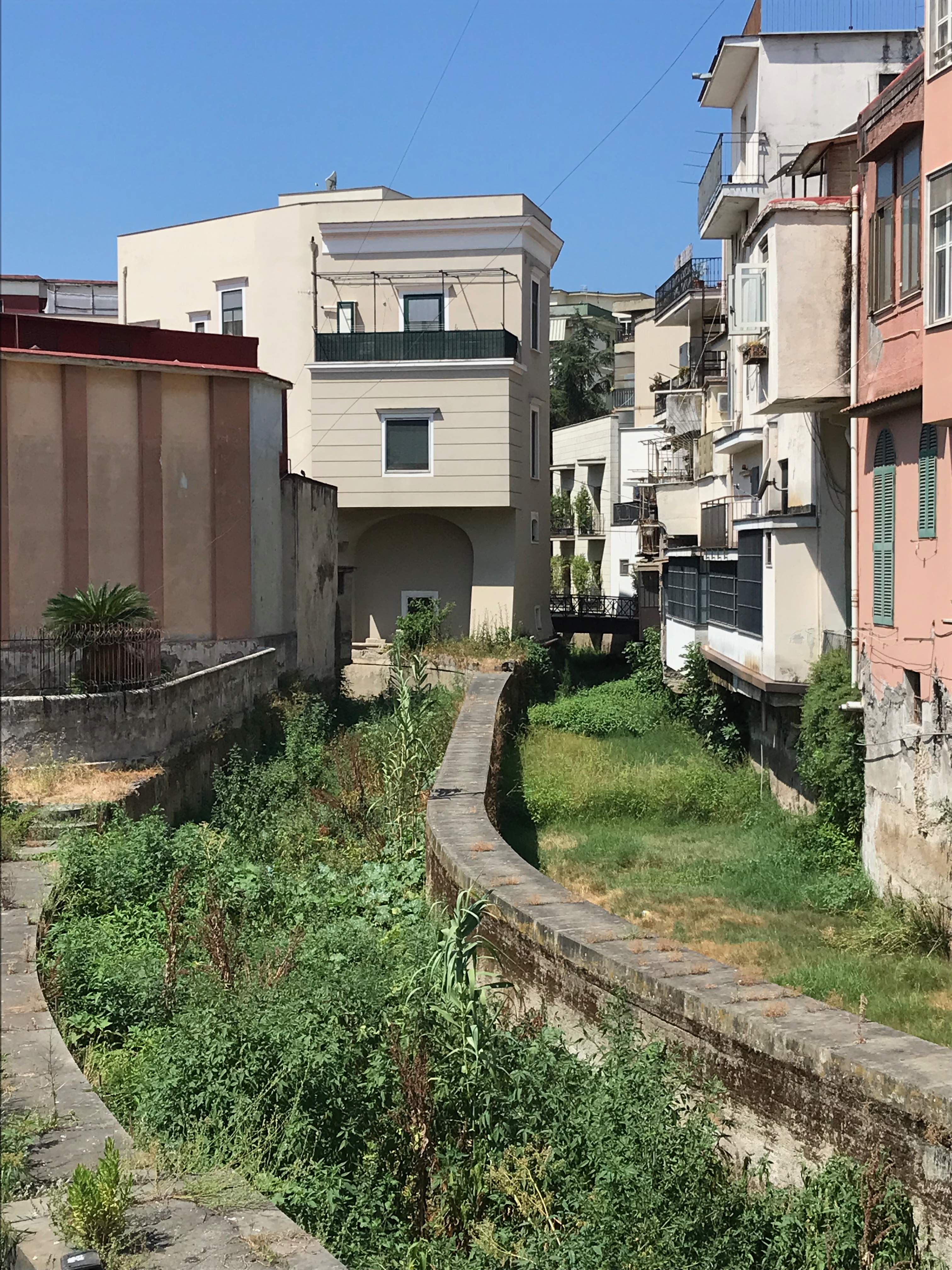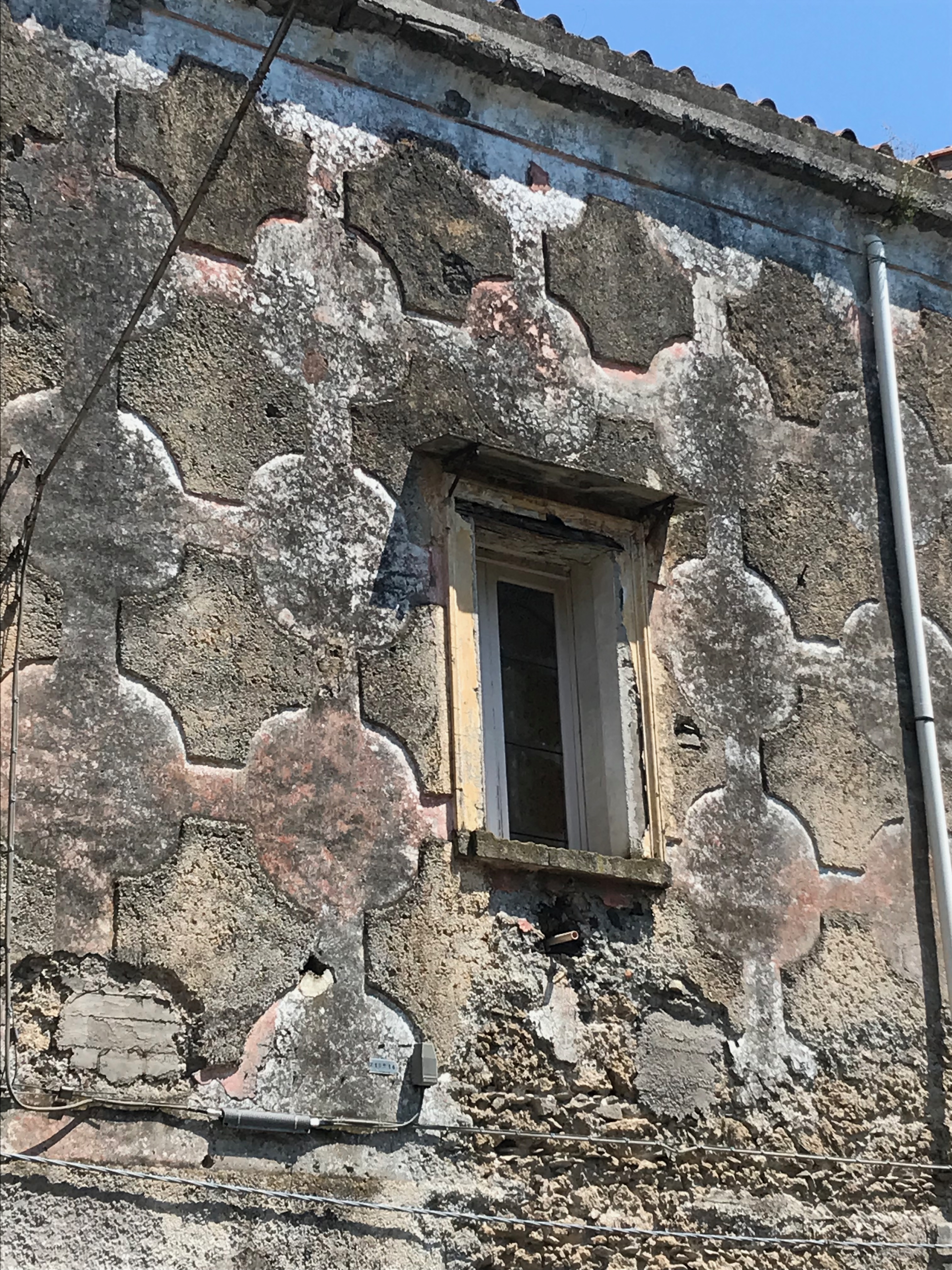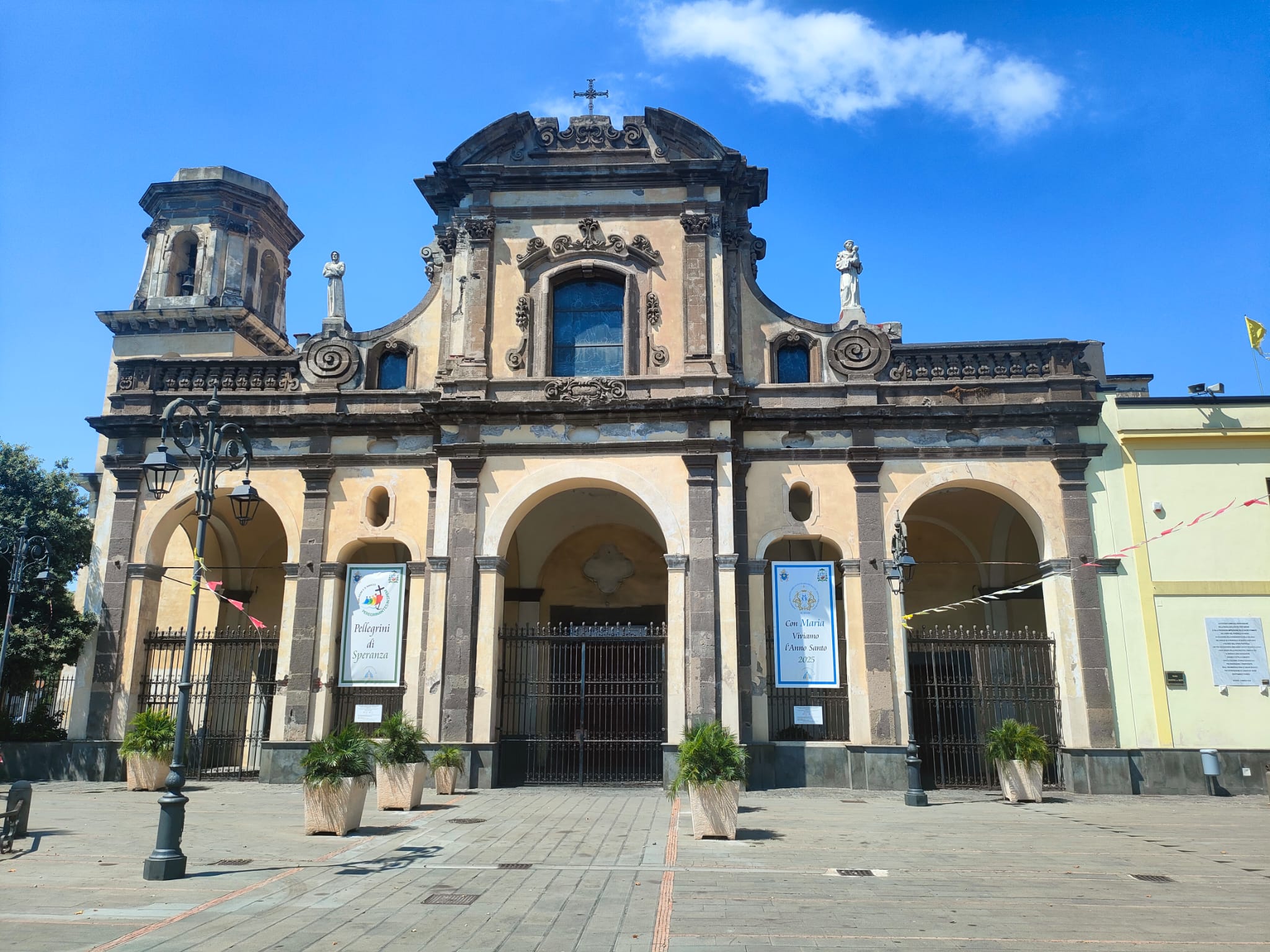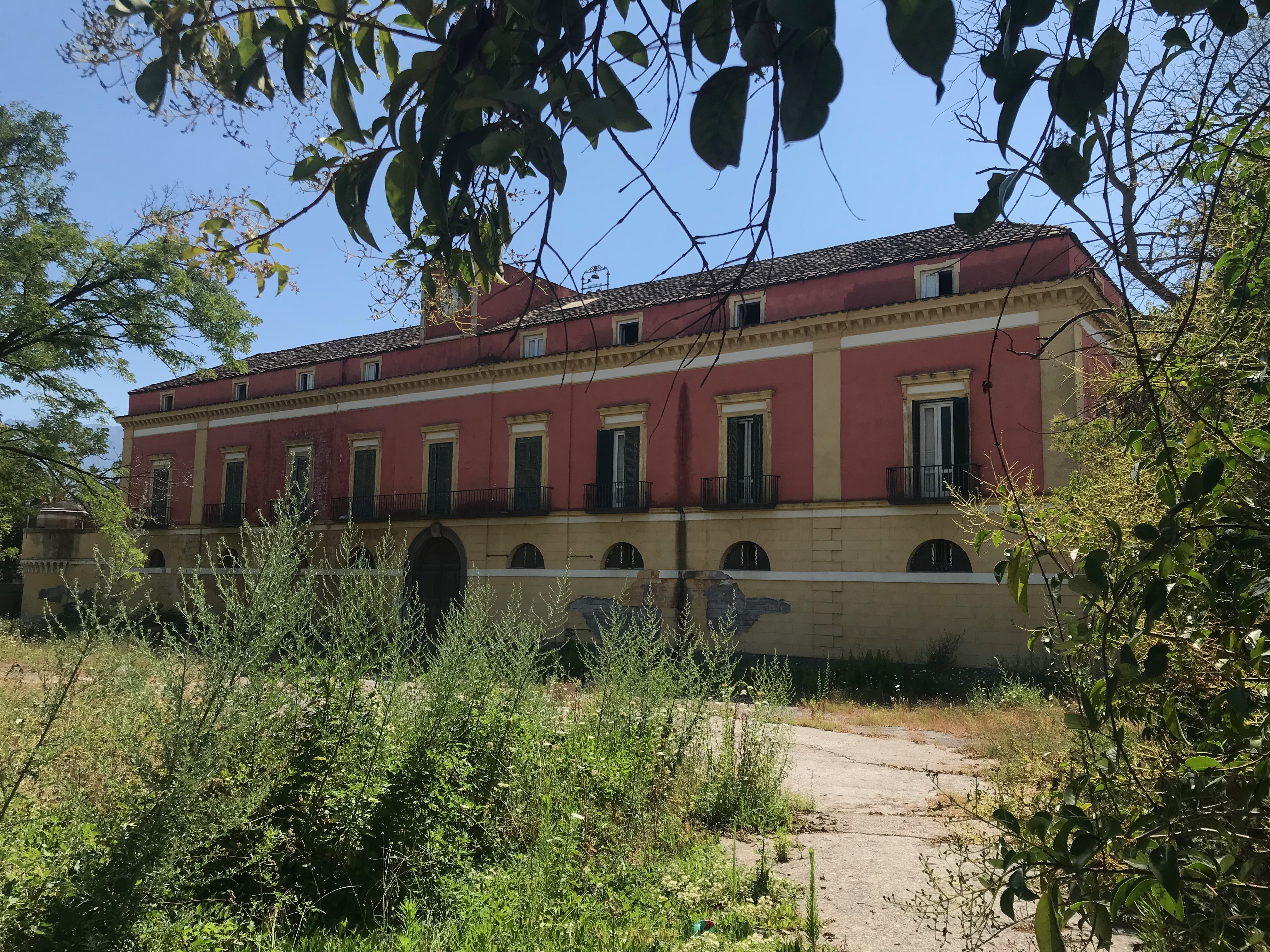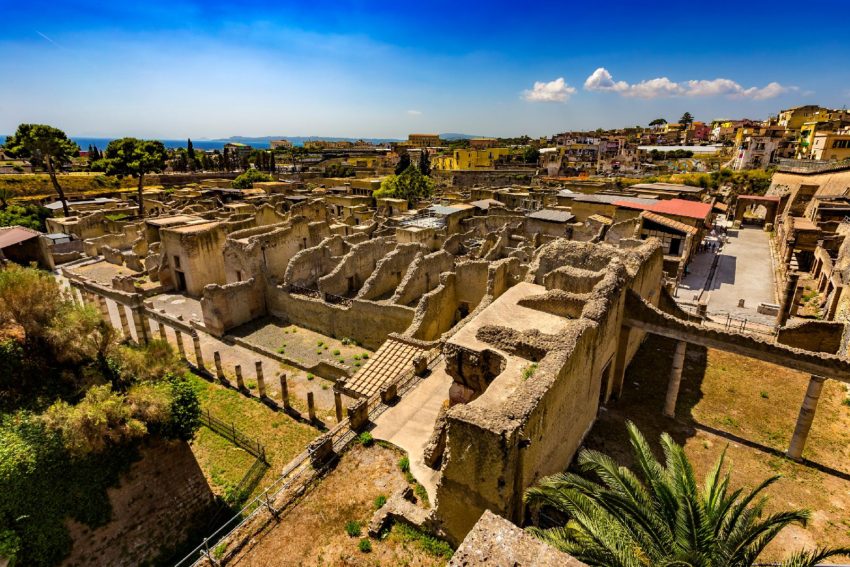In the Footsteps of Modern Scafati: An Itinerary Through Places of Worship, Industrial Archaeology, and River Landscapes
The city of Scafati was the final stop on our itinerary exploring the Vesuvius area in the modern era. Located in the Sarno Valley, on the outskirts of Pompeii, Scafati welcomed people fleeing from the Plinian eruption, gradually transforming over the centuries into a reconstruction center with a strong agricultural, manufacturing, and religious vocation. Although it is currently part of the Province of Salerno, the city, due to its history and continuity with Pompeii and Castellammare, has always belonged to the Neapolitan conurbation. In the 16th and 17th centuries, the establishment of factories and mills in the Bottaro area and the opening of the Strada Regia led to a certain economic flourishing. One of the purposes of the site visit was therefore to verify the presence of traces of that phase in the urban fabric, despite later transformations, as well as possible spolia in the city’s architecture.
The survey began with a visit to the neoclassical church of Santa Maria delle Grazie, known as “dei Muroli,” which served as a first point of observation of the city's historical-religious fabric.
We then moved on to the Collegiate Church of Santa Maria delle Vergini, a church whose precise founding year by the University of Scafati is unknown but which is mentioned in Cardinal Scarampo’s pastoral visit of 1561. We observed the 17th- and 18th-century interventions, including the marble altars, the baptismal font, and numerous painted canvases, as well as the oratory of the Confraternity of Santa Maria delle Vergini. Particularly noteworthy is the Madonna of the Rosary, attributed to Pompeo Landolfo, a painter active between the late 1500s and the early 1600s, with a city in the background that may depict Scafati, and the large polyptych behind the altar, attributed to Decio Tramontano and datable to the late 16th century, with a view of a fortified city in the central panel and decorative elements with strong classical references.
Behind the church, at the edge of Piazza Vittorio Veneto, our attention focused on the Piccolomini Bridge, built in masonry in 1753 by Pompeo Piccolomini d’Aragona to replace a previous wooden bridge. The family received the fief of Scafati in 1464 from Pope Pius II Piccolomini. The marble epigraph placed during the bridge’s reconstruction is still visible nearby, while its current appearance reflects the 1898 renovation. The bridge represents not only a strategic piece of infrastructure but also a tangible sign of political stabilization and the integration of the area into the new commercial circuits of the modern era, tied to the agricultural and manufacturing growth of the Sarno Valley.
A short distance away stands the current town hall with the adjacent Wenner Park (Villa Comunale), formerly the property of Swiss entrepreneur Giovan Giacomo Meyer, who in the first half of the 19th century had established a dye works powered by the river’s waters. We met with the mayor of Scafati, Angelo Pasqualino Aliberti, who spoke to us about the prospects for cultural development of the area.
We then walked through and explored the 18th-century glassmakers’ quarter, a historically industrial area linked to workshops and artisan activities, with an interesting system of open courtyards.
After a brief pause, we moved on to the village of San Pietro, an ancient settlement later incorporated into the municipality of Scafati. Thanks to the availability of the parish priest Luca Tufano and his assistant Gildas Ekpton, we were able to access the Church of San Pietro Apostolo, visiting the exterior areas and ceiling decorations, which are currently in need of restoration.
Crucial logistical support was provided by Francesco Marra, an engineering student at the University of Naples “Federico II,” who accompanied us during the survey of the ancient Cistercian Abbey of Santa Maria di Realvallez. Founded during the Angevin period and originally equipped with a monastery, it held feudal rights over Scafati in the medieval era. Today it lies in ruins, though the architectural stratification of over seven centuries of transformations is still perceptible.
The itinerary continued to the Sanctuary of the Madonna dei Bagni, whose origins are tied to the veneration of a Marian image, and to the former Bourbon Powder Factory, built in 1851 by order of Ferdinand II. Although currently closed to the public, the site remains of considerable importance to the industrial history of the area.
We sincerely thank all those who welcomed us, sharing stories, insights, and granting us extraordinary access, all of which will enrich our research on the Vesuvius cities in the modern age.
Sopralluoghi precedenti
New VeLoCi's on-site exploration: National Archaeological Museum of Naples
VeLoCi's on-site explorations are back, this time from Pompeii
Discovering Vesuvius with the colleagues of the Storia e Clima research seminar
VeLoCi's on-site inspections continuing: from Boscoreale to Torre Annunziata
Starting the VeLoCi team's explorations on the sites of the lost cities

